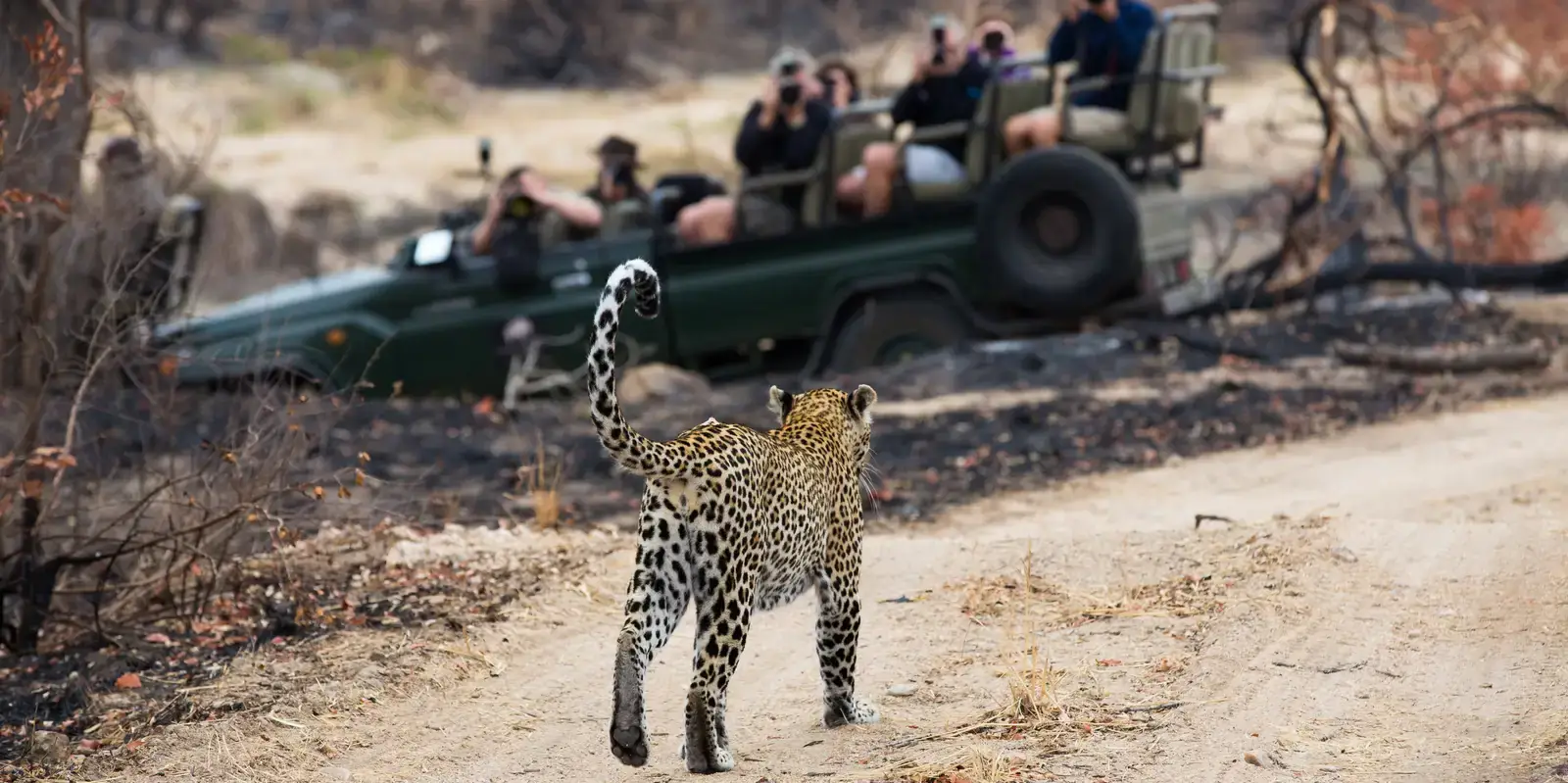
1. Sabi Sands
Stretching over 62,000 hectares and sharing an unfenced border with the world-famous Kruger National Park, the Sabi Sands Nature Reserve offers unmatched Big Five game viewing, stunning natural scenery and some of the best accommodation in the world. If game spotting in a picturesque setting is a priority, then Sabi Sands is for you.
The many watering holes within the park attract large herds of animals, which attract predators in turn. Catering to every preference and budget, the available accommodation ranges from the cozy to the luxurious, with everything in between. October and November are hot, so pack your sunscreen, but expect the first rains to start falling in this period.
Wildlife: Running continuously with the Kruger National Park, Sabi Sands offers unrivalled game viewing. It’s especially famous for the many leopards who roam the reserve.
Weather: It’s humid in October and November, but not uncomfortably so. As the first rains of the year begin to fall, you’ll witness the beginning of the birthing season, and if birdlife is your thing, look out for the return of massive flocks of exotic migratory birds.
Season: It’s high season, so you may experience crowds. An excellent opportunity to make new friends and create new memories. Antimalarial measures are a must.
Safaris:
5 Day Luxury Sabi Sands Promotion
7 Day Sumptuous Timbavati and Sabi Sand Safari
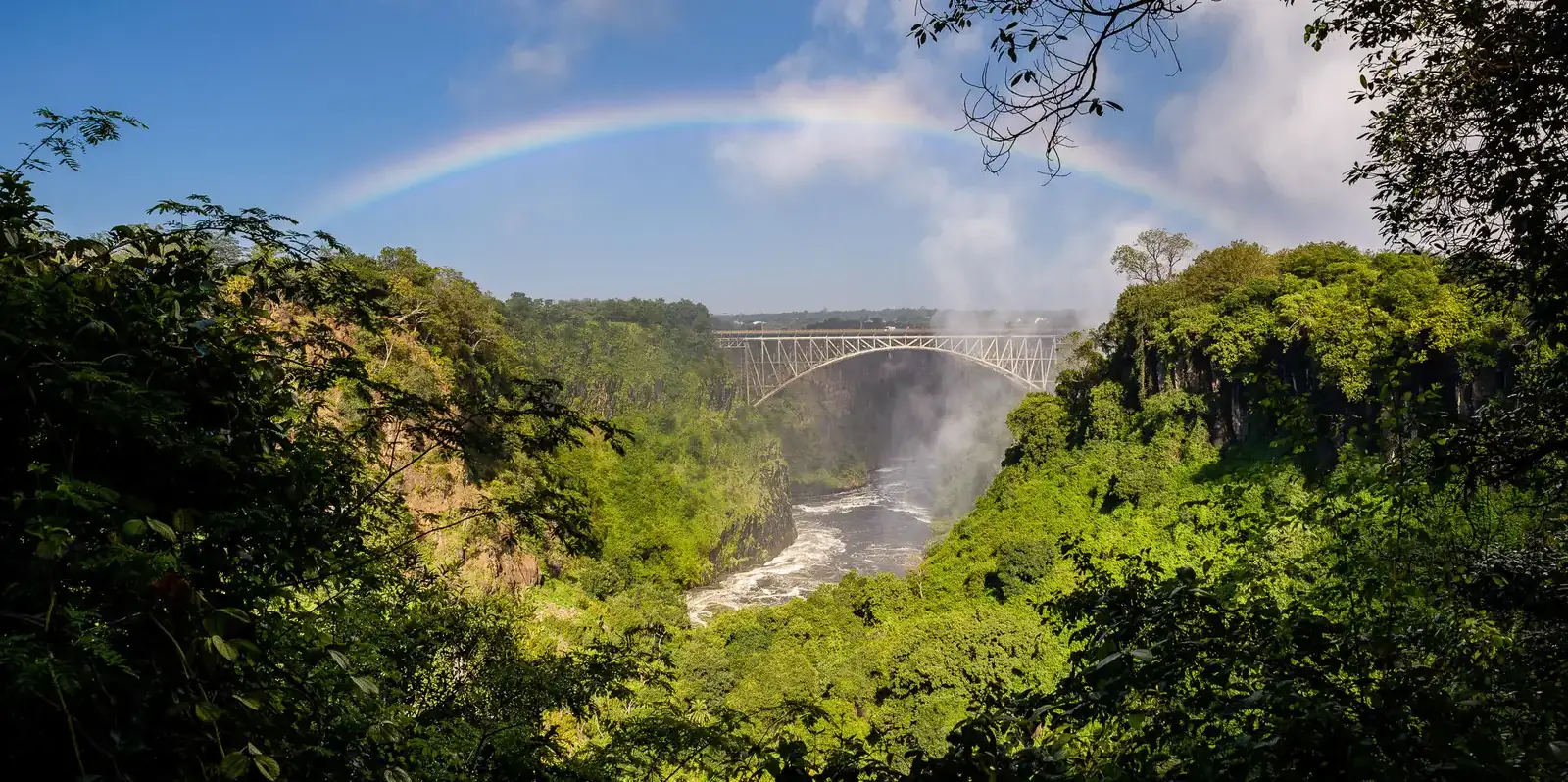
2. Victoria Falls
With a width of 1 mile (1.7Km) and a height of over 350 ft (105m), the Victoria Falls waterfall is the largest of its kind. Known to locals as the Smoke that Thunders, the falls are one of the world’s seven natural wonders. In addition to the sight of the falls itself, visitors can also enjoy white water rafting, kayaking and other water-based activities on the mighty Zambezi River. For those who like to test their nerve, there’s also bungee jumping and thrilling zip wires to traverse.
The falls are an integral part of a unique natural habitat, which is the home to a wide variety of plant, bird and animal species. Visitors can expect to see elephants, lions, wild dogs, rhinos, zebras, sable and impala, among other majestic animals.
Weather: The dry season runs from July Through November (October is generally the hottest month of the year), which means it’s the perfect time to view the unique rock formations in the area, and conditions are also optimal for river rafting. The Devil’s Pool, in which visitors can enjoy a breathtaking swim at the looming edge of the cascading falls, is typically open at this time of year.
Wildlife: The area surrounding the falls is home to thousands of elephants, a massive population of wild dogs, and also many lions. There are many other species of animal on hand, including Lions, leopards and cheetahs, a variety of antelope and hippos (often to be found basking in the Zambezi River).
Season: It’s off-peak season from September through May, meaning less people and better deals.
Safaris:
4-Day-All-Inclusive Victoria Falls Safari at Elephant Camp
6 Day Luxury Victoria Falls & Chobe
3 Day Victoria Falls Fly-in Safari
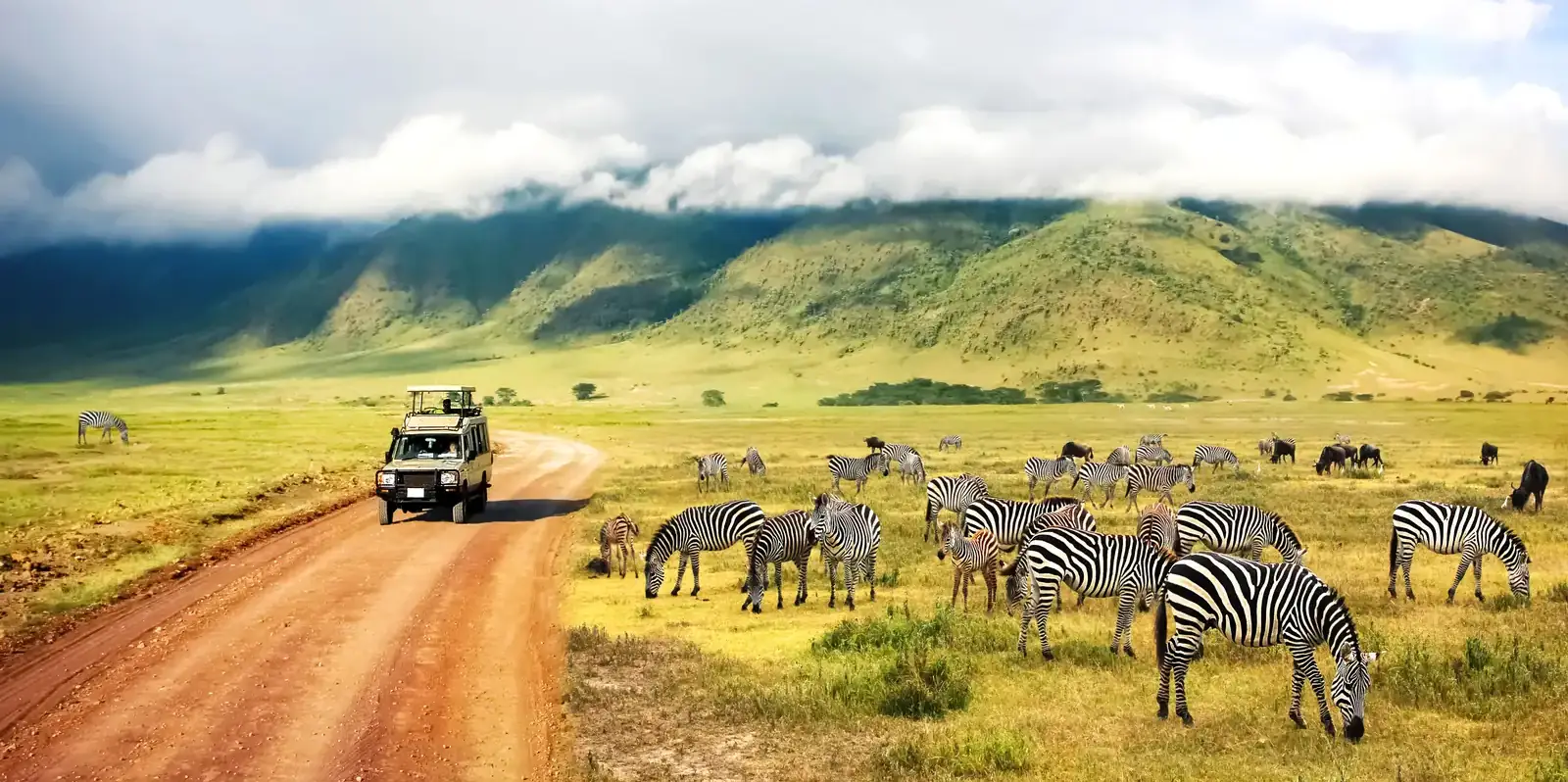
3. Ngorongoro Crater
Once a massive volcano, the Ngorongoro Crater in Northern Tanzania was formed millions of years ago. When the volcano erupted and collapsed, it created the caldera that now houses a breathtaking wildlife sanctuary, boasting all manner of animals.
The crater is located within the Ngorongoro Conservation Area, a stunning wildlife sanctuary comprising highland plains, savanna woodlands and forests. It’s the closest thing to the Garden of Eden on earth.
Wildlife: Animals large and small can be found in the crater, including the Big Five (lion, leopard, rhino, elephant and African buffalo). Hippos, Giraffe and Zebras also proliferate in this unique wildlife haven.
Weather: Average afternoon temperatures in October hover around 19°C (66°F) at the base of the creator. It’s typically warm and wet in November, with average temperatures of 22°C (71.6°F), with approximately 110 mm of rainfall.
Season: October is part of the peak season, as the dry conditions make for less grass and thus greater opportunities for game viewing. November sees the start of the wet season; the scenery is lush and green.
Safari:
6 Day Great Migration Safari - Nature's Most Spectacular Show
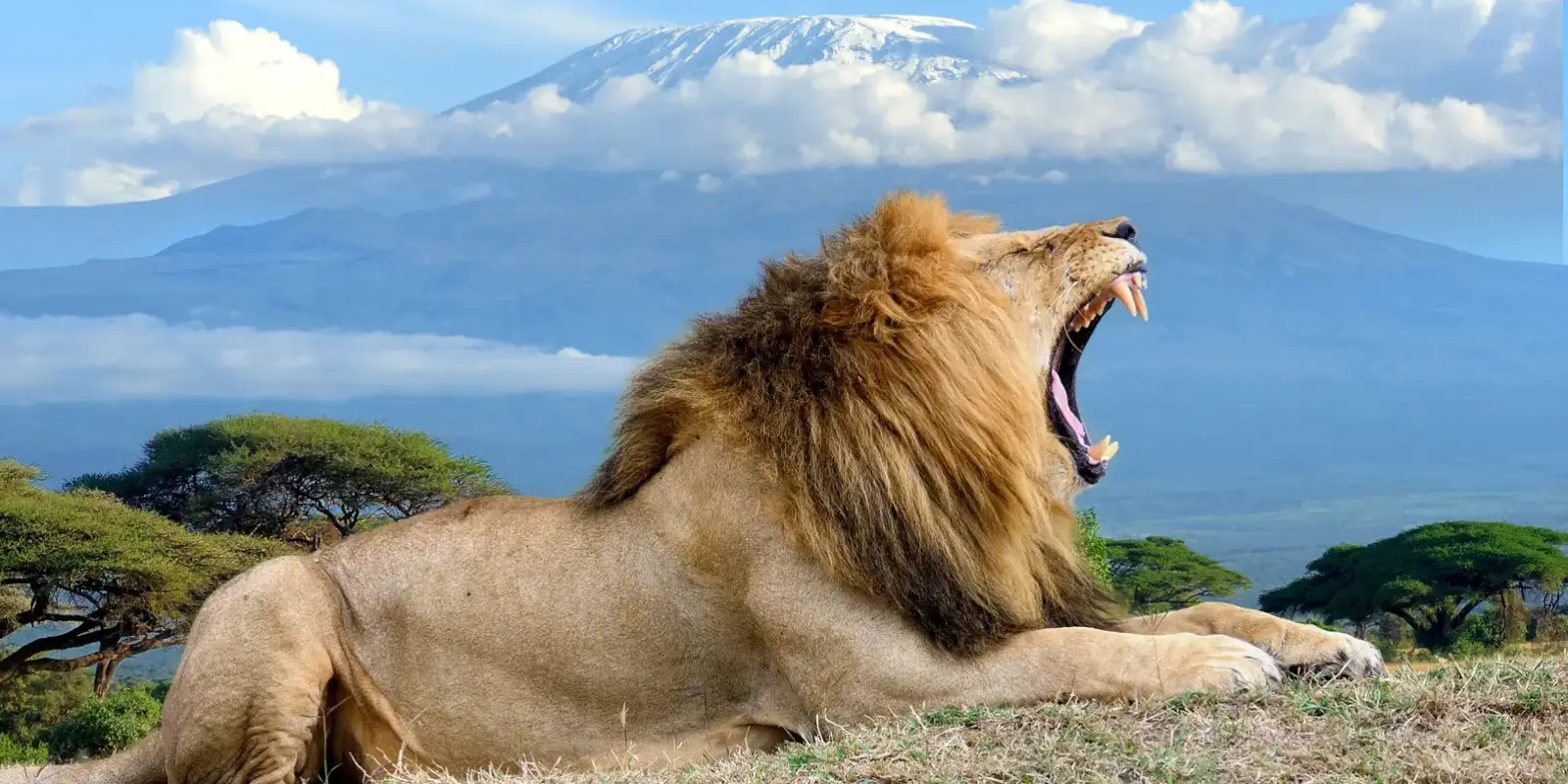
4. Amboseli National Park
One of the most popular national parks in Kenya, Amboseli boasts magnificent views of the tallest peak in all of Africa, Mount Kilimanjaro, which lies on the other side of the border with Tanzania. Featuring woodlands, savannah, wetlands and sulphur springs, the park offers visitors a range of natural habitats to explore.
Visit the local Maasai community (the name Amboseli comes from their word for ‘salty dust’, a reference to the dried up bed of the lake that also bears the name), and encounter massive herds of roaming elephants, in this wildlife paradise. Amboseli is the also the perfect starting point for a visit to the massive dormant volcano that is Mount Kilimanjaro
Weather: The mornings and nights are marked by cold temperatures, whereas it’s typically warm during the day. In late October to November, Amboseli National Park receives occasional brief rains, making October the optimal time to explore this park.
Wildlife: Home to a plethora of different animals and birds, the park is especially famous for the large herds of elephants.
Season: October sees the dry months coming to an end and is considered the perfect time to visit the park. The rains begin in November, so you can expect the fauna to be in prime condition, and it’s usually less crowded at this time of year (the dry season is considered the peak season in Amboseli).
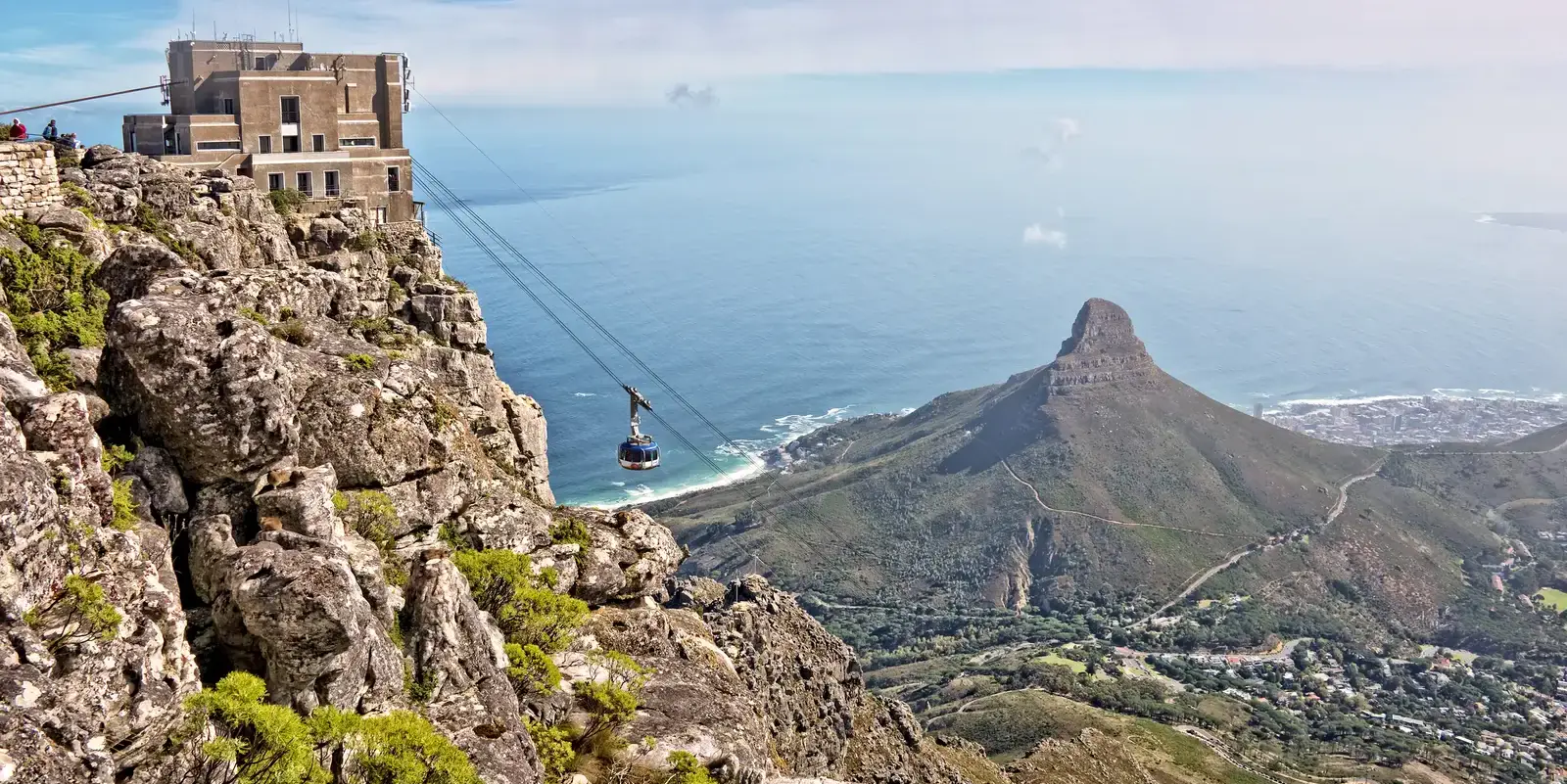
5. The Garden Route
An enchanting blend of exquisite beaches, shimmering lagoons, and pristine forests, dotted with friendly towns and graced by a tranquil coastal road; the Garden Route stretches along South Africa's southern coast and offers breathtaking views, and warm hospitality.
Despite its proximity to the metropolitan city of Cape Town, and all the worldly pleasures and modern convenience it provides, the Garden Route offers visitors a range of wildlife encounters. You’ll see whales, penguins, elephants and more, as you wind your way along the sumptuous coastal roads.
Weather: Spring is an ideal season to explore the Garden Route, with temperatures ranging from 15 to 25 degrees Celsius, typically featuring dry weather with only occasional showers, and the vibrant Fynbos flowers in full bloom.
Wildlife: You’ll encounter eland, bontebok, grysbok, springbok, wildebeest, and baboons in the Cape of Good Hope Nature Reserve on the Cape Peninsula. Plettenberg Bay’s Robberg Nature Reserve is home to Cape Fur seals. Whales can be seen off the coast, and penguins on the beaches. As the name suggests, Addo elephant park is home to hundreds of elephants, and more besides.
Season: it’s Springtime in October and November, which means the stunning flowers that line the route are in full and gorgeous bloom. The peak season starts as we approach Christmas, so it’s a perfect time to go if you’d rather give the crowds a miss.
Safaris:
12 Day Garden Route, Cape Town & Eastern Cape Safari
10 Day Kwandwe, Garden Route and Cape Town
15 Day Cape, Winelands, Whales & Garden Route Adventure
Part 2 of our rundown of the best safari locations for October and November is here (check out Part 1 if you haven’t already). As we near the end of the year, it’s a great time to travel, offering great weather and relative calm before the great tourist migrations begin in December.
The Safari experts at Safari.com are all about helping you to plan your African adventure, and our refund and best price policies are designed to make your choices, and your preparation, that much less stressful. For all the details, get a jump start on your travel checklist and set up a call with one of our consultants now.
Or if you’re still not sure about which destination you’d like to visit, here are five more awesome options for your consideration, complete with insights into the weather, wildlife, and what the timing means in terms of crowds and rates.

